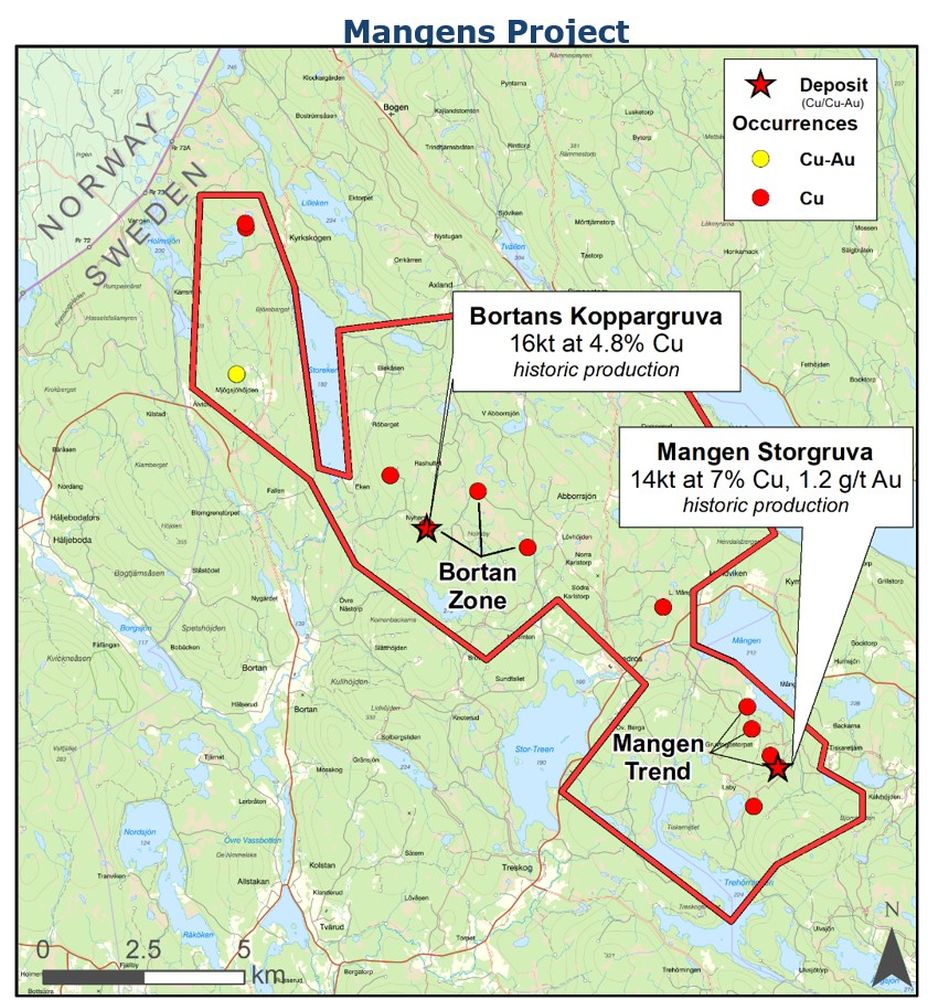Mangens
EMX’s Mangens project comprises a large land position that covers the Swedish extent of a regional shear zone called the Mylonite Zone, which extends from the Oslo airport in the north to Lake Vänern in Southern Sweden. The Mylonite Zone is a major structural control that contributed to the enrichment and subsequent historic production from multiple deposit styles in the Dalsland-Värmland Metallogenic District. This district has rich mining history, but has been overlooked by modern explorers in favor of the more famous Bergslagen and Skellefte Districts.
Historical production at EMX’s Mangens Project centered around copper mineralization from two main areas: the Mangen Trend and the Bortan Zone. These areas include historical workings along magnetic trends with average production grades of 7% Cu and 1.2 g/t Au. Chalcopyrite, magnetite, chalcocite, bornite and pyrite mineralization occurs within quartz veins hosted in a sheared granitic gneiss. Historical dumps contain abundant chalcopyrite mineralization. The presence of mineralization and malachite staining in the pit walls indicates that the historical workings did not exhaust the potential of the system.
The magnetite rich ore shows up strongly in airborne magnetics and geophysics will be a key tool in future targeting at the licenses. Geophysical processing reveals multiple km long magnetic trends that need follow up exploration.
Note: Historic productions values are cited from “Official Statistics of Sweden, Metal and Mining Industries’ and were published in Special Paper 53, Geologic Survey of Finland (2012).” 14,000 tonnes were mined with an average grade of 7% Cu and 1.2 g/t Au from 1898 to 1909 at Mangens Storgruva. EMX has not performed sufficient work to verify the published production information, and these data cannot be verified as being compliant with NI43-101 standards, but EMX believes this information is considered reliable and relevant.
Maps
Photos

 Click to Enlarge
Click to Enlarge